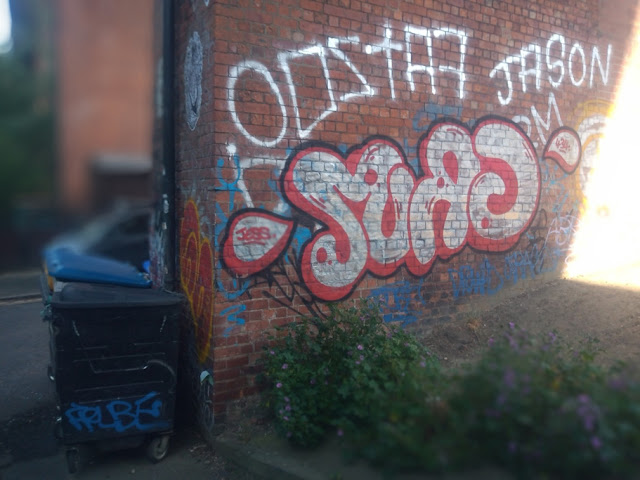The existential emergencies we face require a wholesale reimagining of how we live, work and play in urban spaces
Sunday, August 23, 2020
The New Vitality
The existential emergencies we face require a wholesale reimagining of how we live, work and play in urban spaces
Sunday, August 9, 2020
Look but don't touch ...
Or, 'keep your distance ...'
So the summer hits its peak and we notice the days are getting ever so slightly shorter. A strange year not all bad: Air quality improved for a while and some places were very quiet even on a weekday. But what of the future? For 'battlefield' mostly good.
Since I began posting notes about this slice of green space it has improved year on year. Trees have grown so much I can barely recall how it looked when these were saplings. True, some vandalism recently was jarring note. But the area survives mostly and that's enough. I would like to see a little more planting in some places. However, the years when I feared the site would go under tarmac for car parking or be turned into a sports centre for students only (students are among its biggest fans all the same) are long gone now. Urban Green have moved in and that's fine by me.
Some recent photographs:
Warts and All Ouseburn. One of the aspects of strolling through Lower Ouseburn over the years has been its 'rough edges'; this lack of corporate smoothness endears it to me. It isn't neat tidy and tourist 'heritage' – or not yet, but that is coming. The newer developments have been welcome in part but the fear – my fear – is that 'the men in white Porches' will get their monied hands on the area and the 'chic' of dereliction (see the epicly comedy film Zoolander for details) gets the expensive 'landscape features' and general tidying up plus 'gated' zones that have happened elsewhere. Meanwhile all the qualities of haphazard and messy incongruity that gives a favour to places like Ouseburn will be lost. I hope not and some public statements by Ouseburn old hands leads me to feel encouraged if not over optimistic.
One reason for including the 'street art' is its subversion of 'urban renewal'. I would put up with the one to avoid the dead hand of the other.















